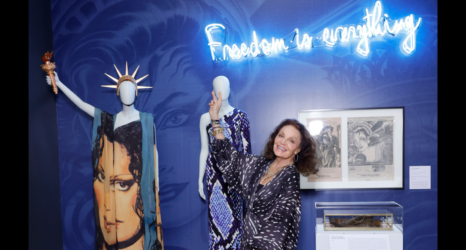A new study released by the National Opinion Research Center at the University of Chicago provides a shocking picture of the extent and impact of sexual harassment and assault on women’s lives.

The location varied: 38 percent of women reported experiencing sexual harassment in the workplace and at school; 68 percent reported experiencing harassment in public spaces such as streets, stores and restaurant; and 40 percent reported experiencing sexual harassment online. So did the nature of the harassment: 49 percent of women reported being groped or sexually touched without their consent, 27 percent reported having been followed and 30 percent said they had been flashed.
But altogether, the nationally representative survey of 1,182 women and 1,037 men found that 81 percent of women have experienced sexual harassment and/or assault in their lifetime.
“This report demonstrates that sexual harassment is prevalent and ubiquitous in the U.S., no matter who you are or where you live,” said Dr. Anita Raj, Director of the UC San Diego Center for Gender Equity and Health, which sponsored the study along with the nonprofit organizations Stop Street Harassment, the California Coalition Against Sexual Assault, Promundo, and RALIANCE. “At the same time, we also see increased risk among some of the most marginalized groups.”
Whereas 70 percent of straight women reported street harassment and 21 percent reported sexual assault, 91 percent of lesbian and bisexual women reported street harassment and 47 percent reported sexual assault. (A stunning 95 percent of lesbian and bisexual women reported sexual harassment and assault—the highest rates of any group surveyed.) Women with disabilities also reported higher rates of sexual harassment and assault than women without disabilities: 35 percent told surveyors they experienced street harassment and 47 percent said they had experienced sexual assault, compared to 20 percent and 21 percent of women without disabilities.
Groups with the highest likelihood of experiencing sexual harassment in the last six months were young women (32 percent), Black women (35 percent) and lesbian and bisexual women (39 percent).
The study also found that accusations of sexual harassment and assault were very rare. While about one-third of respondents said they had committed one or more of the forms of harassment and assault included in the study, only two percent of men and one percent of women said that they had ever been personally accused of committing sexual harassment or assault.
“This shows why any mention of so-called false allegations is so off base,” said Brian Heilman, Senior Research Officer at Promundo. “The evidence is clear that sexual harassment is real and it’s all around us, but sadly there are too few accusations of any type, since many survivors don’t feel safe in bringing these experiences to light. All of us need to demonstrate much better support to those who have experienced harassment and assault, to believe them if they choose to speak up and to help them receive some measure of justice on their terms.”
Instead, the Trump Administration is giving a sympathetic ear to accused rapists and rolling back sexual harassment and assault protections, claiming that women and girls lie and falsely report these experiences. But feminists are fighting back—in court and with campaigns for consent education.
“Prevention efforts, including education in schools as early as possible around issues of consent and harassment, are crucial,” said David S. Lee, Director of Prevention at CALCASA. “We know that prevention works, and it’s necessary to shift to a culture where individuals look out for one another.”
As the #MeToo movement reaches a crest, the study also shows the need to expand the conversation. The most common place women reported experiencing harassment and violence was at home—either someone else’s residence (10 percent) or their own (7 percent). These experiences caused many women to experience anxiety or depression (30 percent), change their route or routine as a result of the experience (23 percent) or end a romantic relationship or friendship (22 percent).
“Our study demonstrates that the problem begins well before most people reach the workplace, with public spaces and private residences being prime locations for experiences of sexual harassment and assault,” said Holly Kearl, founder of Stop Street Harassment. “We must address the problem there, too.”





